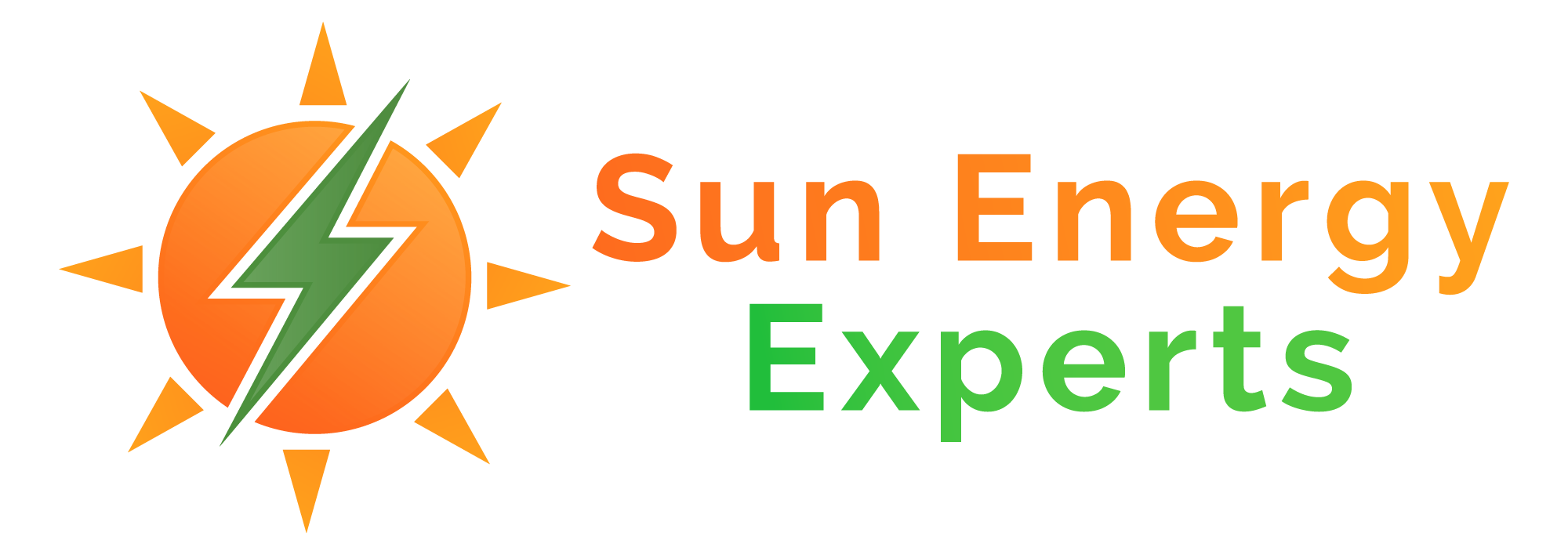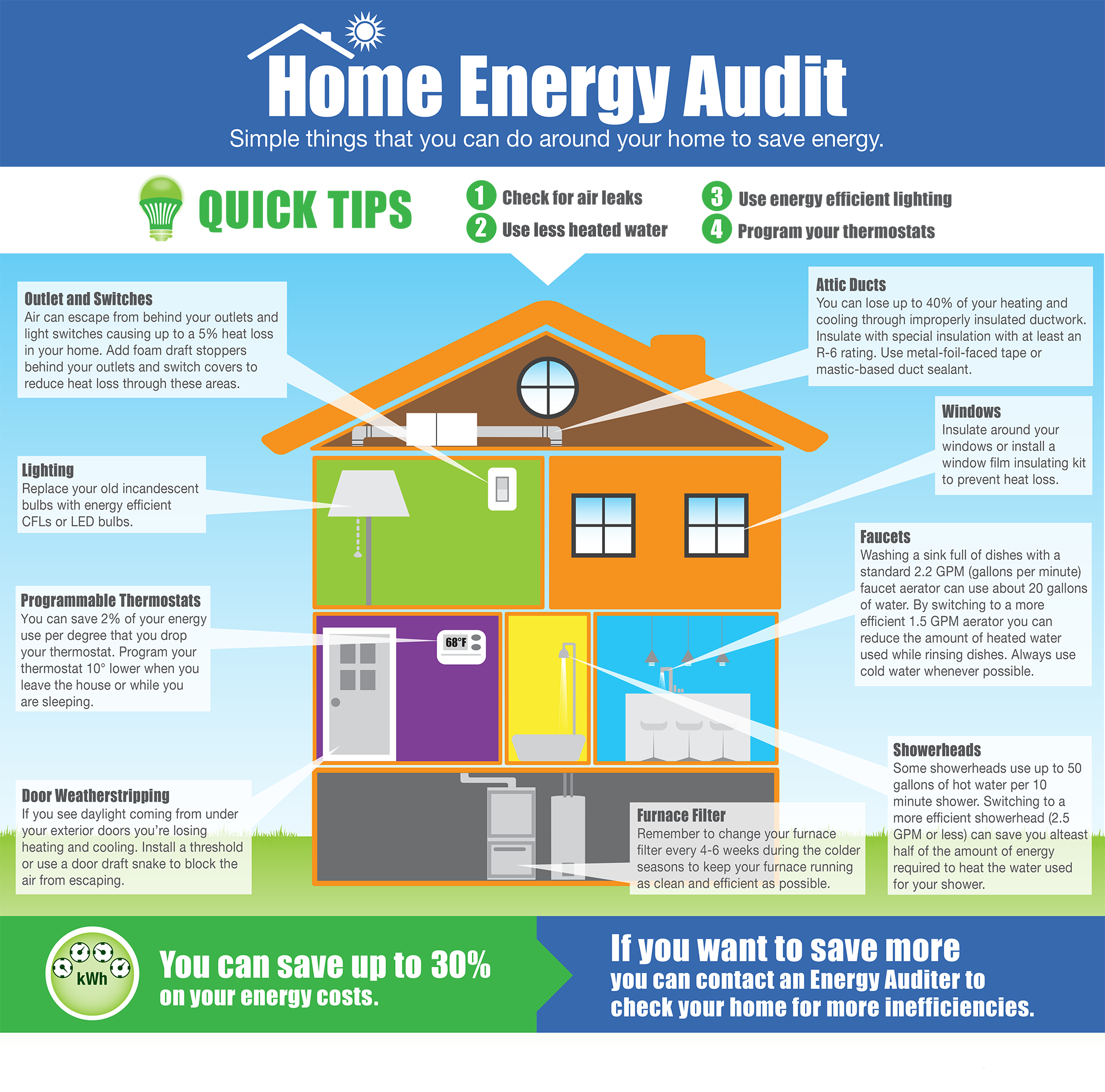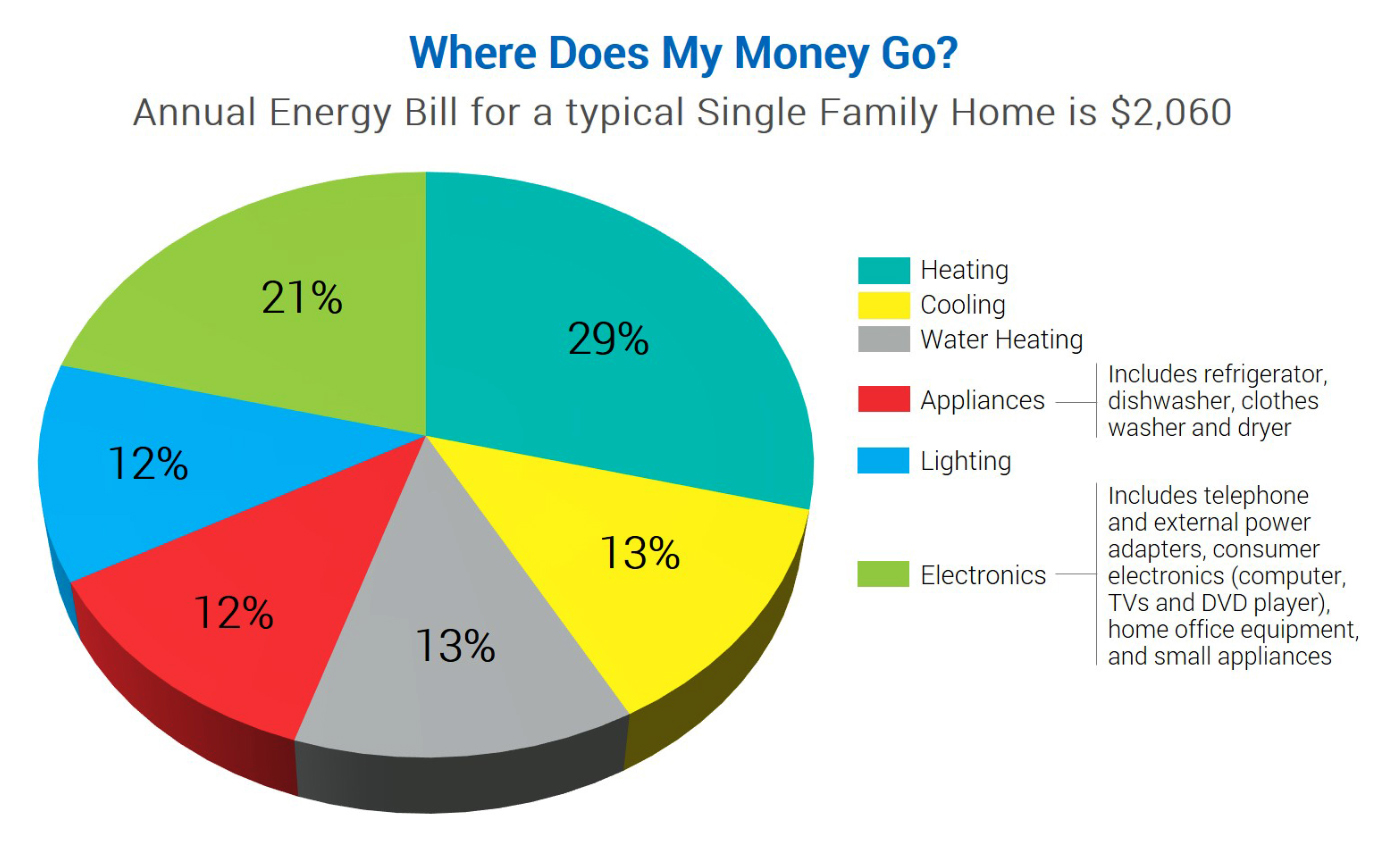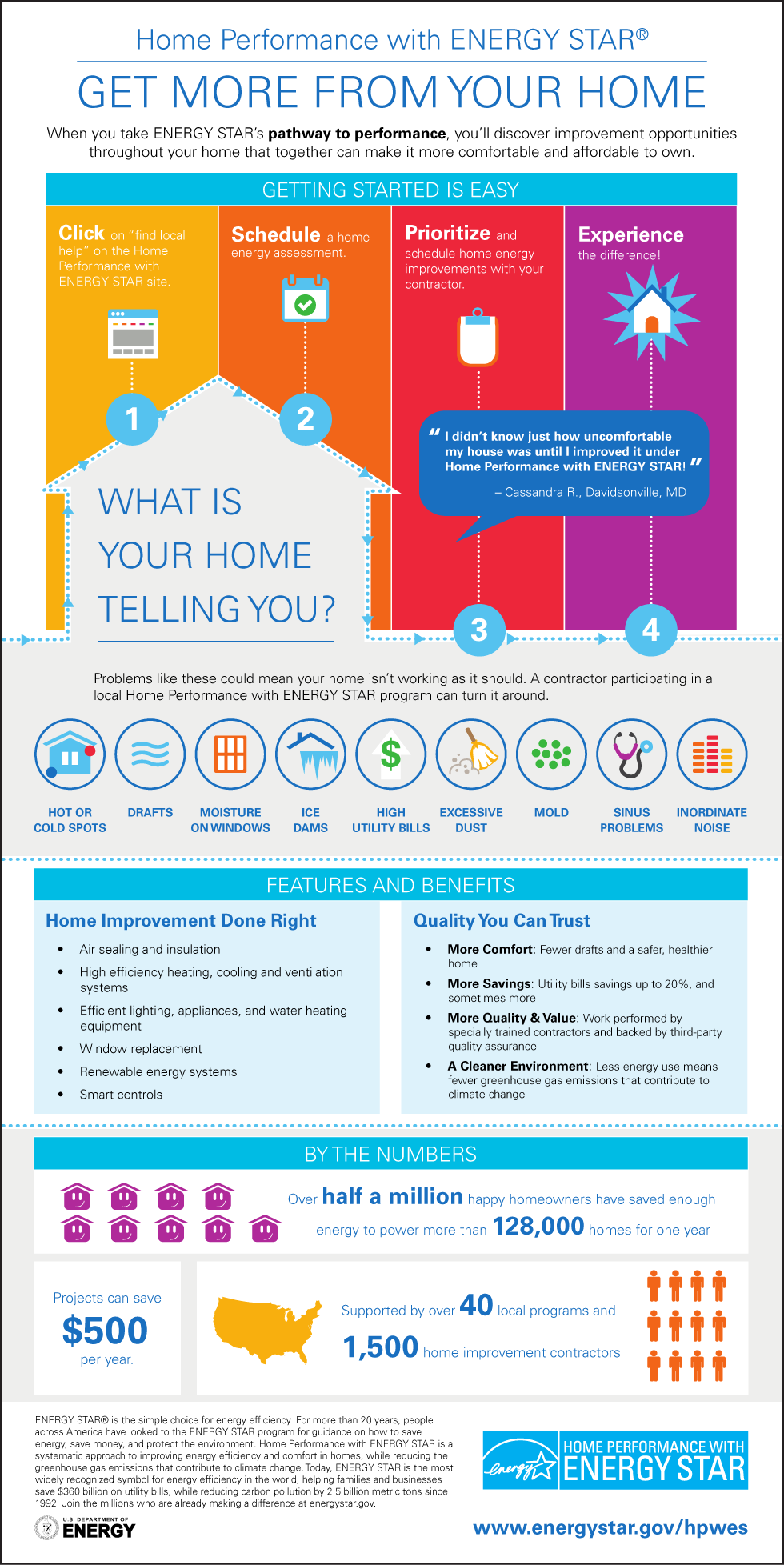ENERGY EFFICIENCY SAVINGS
Efficient energy use has been a rising trend in the United States due to increasing energy costs and the environmental problems caused by greenhouse gas emissions. This green energy trend is evident in the products and appliances for sale to consumers, many of which become more energy efficient from year to year. The trend also extends to homes: a growing number of prospective homeowners are starting to request energy ratings before deciding to purchase property.
How to save on electric bills with energy efficiency
Implementing energy efficient technology and practices in your home can reduce your annual utility bill by anywhere from 5 to 30%, or equivalently $105 to $627 on average. Essentially, your savings are the result of reduced energy demand: homeowners can either directly reduce electricity use by installing more efficient appliances, or prevent unnecessary energy waste lost as heat through improving insulation.
On average, homeowners spend the most on lighting and electricity, space heating, and water heating expenses, costing $827, $593, and $280 per year, respectively. As a result, these technologies are typically the most promising areas for cost-reducing energy efficiency improvements. However, it is often difficult for the laymen to discern which area is responsible for wasting the most electricity and what actions should be taken. To maximize energy efficiency and potential savings, we recommend hiring Sun Energy Experts who is a professional energy auditor to pinpoint sources of waste.
The implicit return of energy efficiency investments
Energy efficient products and services can cost more than conventional ones, turning many consumers away and towards the purchasing of more traditional appliances and services. However, the electricity savings you see from energy efficient measures should eventually offset their extra cost, which provides an implicit return on investment (ROI) when compared to the lifetime costs of adopting more conventional products.
To calculate the time it will take to comparatively break-even on energy efficient purchases, you need to know the type and specific energy requirements of the product, as well as the cost and energy requirements of a comparable conventional product. The features of your home and the cost of electricity where you live will give an even more accurate picture. Home energy audits that pinpoint the sources of unnecessary energy waste can help to suggest appropriate actions for your home.
The implicit “income” that comes in the form of utility bill savings is unique in that it increases over time. The most recently released Residential Energy Consumption Survey Data in 2015 estimated the annual energy expenditure for a US household was $1,856, a slight decline from 2009 numbers.
During this same period, annual electricity consumption per household actually fell from 89.6 million to 77.1 million Btu per household – meaning that more staic household energy expenditures came from rising energy costs, not increased usage. As energy efficiency measures help households avoid these rising energy costs, our analysis shows that they result, on average, in an additional 1.72% real annual return per unit of energy saved – about the same rate as a five-year Treasury bond. Although this is an attractive bonus, it should be stated that historical price movements alone – they are primarily dependent on external developments in environmental regulations and fossil fuel prices.
Should you get an energy audit?
According to Lawrence Berkeley National Laboratory, the average American household spends roughly $2,060 per year on energy costs. This money is used to heat your home, power your appliances and lighting, and more.
The amount you spend on energy depends on the type of fuels used (from electricity, to oil, to propane, to wood in a fireplace) and the rate price at which it sells for in your area. The price of these fuels may be outside of your control as a property owner, but one thing is sure; the less energy your home consumes, the more you’re going to save on your electricity bill.
One way to make sure you’re being as efficient (and, therefore, as conservative) as possible in your energy spending is to go through a home energy audit.
What happens during a home energy audit?
An energy audit is an assessment of your home that takes a look at current energy consumption and then identifies energy efficiency measures that you can conduct to make your home more efficient. An energy auditor can assess where your home is losing the most energy, and then proposes improvements to make to help save energy – and reduce your utility bills.
Professional energy audits can take anywhere from 30 minutes to 4 hours to complete, depending on the size of your home. These professional auditors use a variety of tools to establish problem areas within your property, and come up with a list of suggested measures and actions that you can take in order to make your home more efficient.
Here’s what a typical energy audit might look like in your home:
1. An energy auditor will take a look at your building from the outside. They’ll examine a variety of components, including windows, walls, and eaves, to see if they can spot any major issues causing leaks into or out of your home.
2. The auditor will check out the attic (if you have one) to take a look at a few things. Most importantly, they will inspect your insulation to make sure it’s correctly installed and applied evenly between your walls. They’ll also evaluate the holes where electrical lines run to see if they’re properly sealed, or could be a source of leakage.
3. The auditor will examine your furnace and water heater. If either is on the older end, it is likely a candidate for an upgrade. They’ll also likely take a look at the filter in the furnace to ensure that it doesn’t require replacement. They’ll also check connections in the ducts in your basement to try and locate any possible leaks where you may be losing heat and energy.
4. Most professional audits will include a blower door test. This is a device that allows them to locate air leaks in the home. During a blower door test, all the windows and doors are closed, and they’ll use a blower door machine to depressurize the home. At that point, the auditor uses an infrared camera to see where cold air may be leaking into your home.
5. Finally, audits usually include an inspection of the lighting in your home. If you’re using standard incandescent light bulbs, you can easily reduce your electricity costs by switching over to light-emitting diodes (LEDs) or compact fluorescent lamps (CFLs).
These are some of the more common steps taken in an energy audit. However, depending on the scope and the tools in your energy auditor’s arsenal, there may be some additional steps taken (such as thermographic inspections).
The recommendations that your energy auditor makes for your home depends on the scope of the audit. Some lightweight suggestions may be switching to more efficient lighting, sealing air leaks from doors or adding weather stripping. Some larger suggestions might include more insulation, or replacing windows that are causing drafts in your home.



